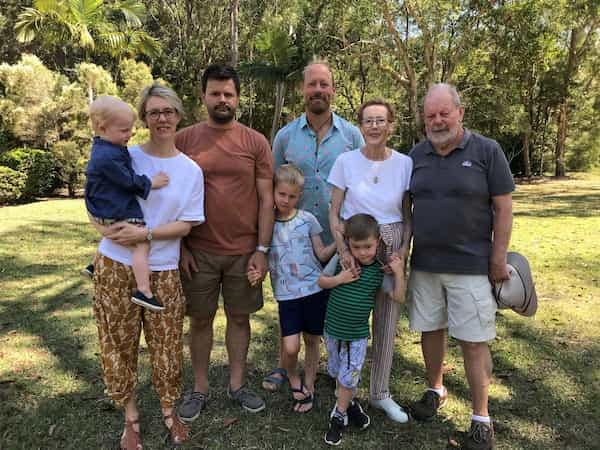Shirley’s “so well” on her latest treatment – daratumumab
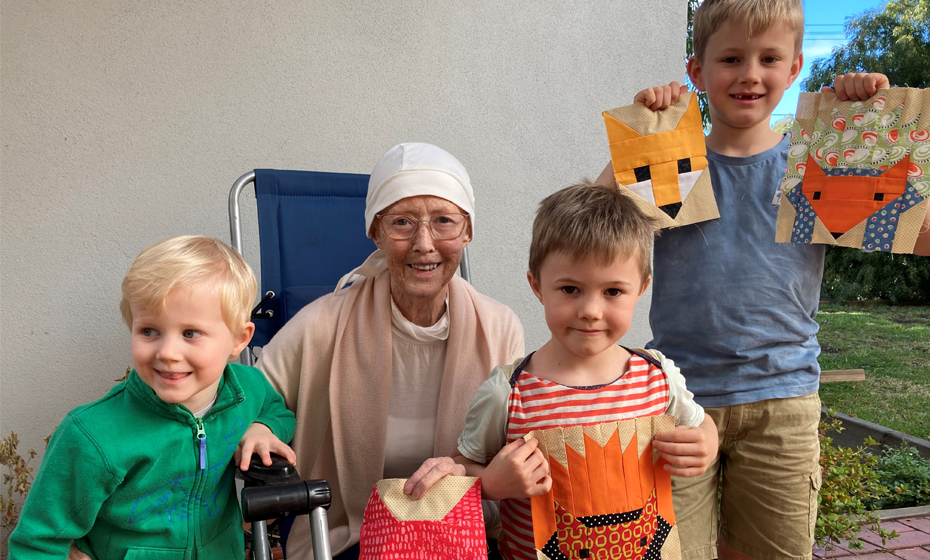
Shirley Irwin has had radiotherapy and two transplants, she’s dipped into savings to access treatment, had surgery, five different lines of treatment, and relapsed twice.
Despite all that has happened since her diagnosis with high-risk myeloma in May 2018, Shirley says, “I would say I have had a milder journey”.
Now on the monoclonal antibody, daratumumab (Darzalex®), which she started in July 2020, Shirley doesn’t know what her next option will be, but she’s prepared to personally pay for access to new therapies again, if they are not available on the Pharmaceutical Benefits Scheme (PBS). She and her husband, Bruce*, have a second property that they are prepared to sell, if necessary.
Now though, Shirley says she’s “so well, feels so good and is absolutely normal except, except weak to walk”. The daratumumab is working for her, she has no side-effects and hopes to continue this treatment on an ongoing monthly basis.
“If I could coast along like this, it would be lovely,” said Shirley.
Myeloma diagnosis and initial treatment
Myeloma came out of nowhere for Shirley, appearing as a sudden pain “that was scary”, while on holiday. She and Bruce had been away for six weeks in their caravan, had met up with friends from Perth, and were at Hall’s Gap.
They continued down the coast and up to Canberra before Shirley decided the pain was too great to go any further.
“It was leaving me uncomfortable and affecting my body. I said to Bruce, ‘I want to go home, straight home’,” said Shirley about returning to Ocean Grove, the seaside Victorian town where they have lived all their married life – 45 years.
She went to the doctor and after some tests a lesion was found on her spine and she was told she had high-risk myeloma. She was 69 and knew nothing about myeloma.
“I’d never had surgery, I’d never been ill; it was a big learning curve,” said Shirley, now 71.
Treatment began immediately. Radiotherapy on her spine, to shrink the lesion, before induction treatment with bortezomib (Velcade®) and a stem cell harvest, in preparation for an autologous stem cell transplant in October.
“I didn’t have any big hiccups, no big infections or anything like that. All was well,” she said, describing her 16 day-stint in hospital at Geelong for the transplant.
“Then I rallied around to have a luncheon for my 70th.”
That was in November, and her condition then was “only just strong enough” and she wasn’t eating much.
“I slept a lot,” she said. “I slept on the terrace in the sun, on the couch, in the caravan. I went from place to place until I got stronger. It was tiring, but it was fine. You just do what you have to do.”
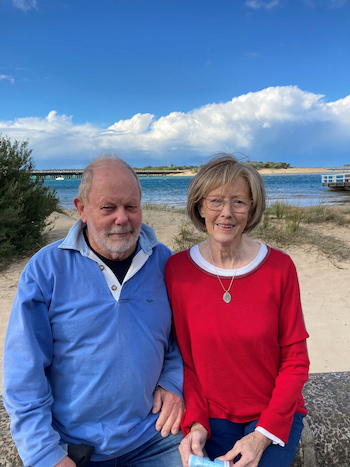
Her second stem cell transplant
Shirley “took it as it came” until March (2019), when she had her second transplant. By then, her paraprotein level, which the first transplant had brought down to two, had risen to four.
“When I was first diagnosed, it was 75, which was ridiculous,” she said.
Due to her myeloma being Stage 3, she knew she was to have another ‘piggyback’ transplant.
“They had harvested enough stem cells to give me two transplants and it’s not uncommon to have two,” said Shirley.
“By the time I was due to have it, I’d forgotten the first one… but it didn’t take long to remember!
“I think I did the transplant very bravely and I rested for another couple of months after that.”
Shirley relapsed after two transplants
“Then in June, I relapsed,” said Shirley.
The myeloma had come out through the soft tissue in her left buttock.
“I thought… that’s a muscle or something… and took myself to the physiotherapist who manipulated it. Little did I realise that was the relapse.”
Shirley had expected to go through a course of treatments, starting with thalidomide, then lenalidomide, “then the next one, and the next one, and the next one… until where I am now”, she explained.
But her haematologist said, “thalidomide wouldn’t do anything, we’ll jump straight into lenalidomide with carfilzomib, but you can’t have both on the PBS”.
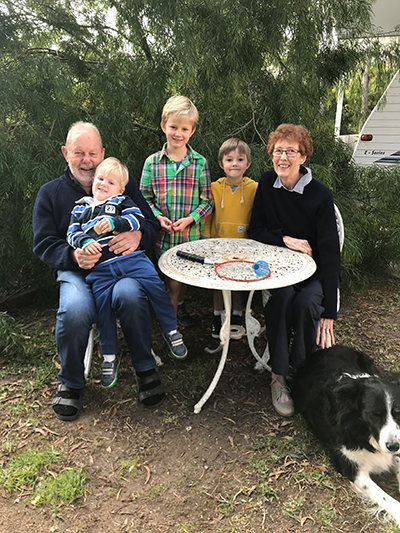
The decision to pay for therapy
Therefore, to have both treatments together, as a combination therapy, Shirley would have to pay for one of them.
“The lenalidomide was the cheaper of the two,” she said.
“My daughter, who was with me at the time, said, ‘well, if that’s the option, that’s what’ we’ll do’.”
But Shirley wasn’t comfortable with this decision initially.
“It meant spending our money for retirement. There wouldn’t be any cash left and there would be less when we’re gone.
“It caused me a lot of stress and took me a while to come to terms with spending the kids’ inheritance on this medication, but the family assured me, ‘we don’t want anything, … we want you’.”
Bruce had worked out that the cost of Shirley’s treatment to that point, accessed via the public medical system [the Irwins don’t have private health cover or receive a pension], was around $450,000. He convinced her and she subsequently agreed, that paying $60,000 so she could have two treatments at the same time, which her specialist said, “was the best recipe for her”, was a “pretty fair go”.
Shirley got access to the more expensive treatment, carfilzomib, through the PBS, and began the lenalidomide/carfilzomib regimen in June.
“I settled into that really well,” she said.
By October, Shirley had gathered strength. She and Bruce went on a “special family holiday” to Noosa in Queensland, along with her sister, Heather, and husband, John, daughter, Paige and her husband, Dan, and their three boys, and son, Saul.
Both Paige and Saul, live close-by to their parents.
“One’s just across the bridge at Barwon Heads and one’s round the corner,” said Shirley.
Another relapse and more treatment
For nine months, Shirley did “really well” on the combination therapy until the myeloma appeared again, in April 2020, this time in her thigh bone, causing a fracture.
“I’d relapsed again,” said Shirley.
She was told the myeloma had cloned and was no longer responding to the lenalidomide/carfilzomib. She needed a different treatment, but first she had to have more radiotherapy, and before she could have that, she needed surgery to put a pin in her right leg, from her hip to her knee, to secure the bone.
That happened within days, “which was super”, said Shirley as she couldn’t weight-bear and “it was so painful”.
“It took six weeks to get over the surgery, but then after a week or so I could have the radiotherapy. Now I’m fine in that leg.
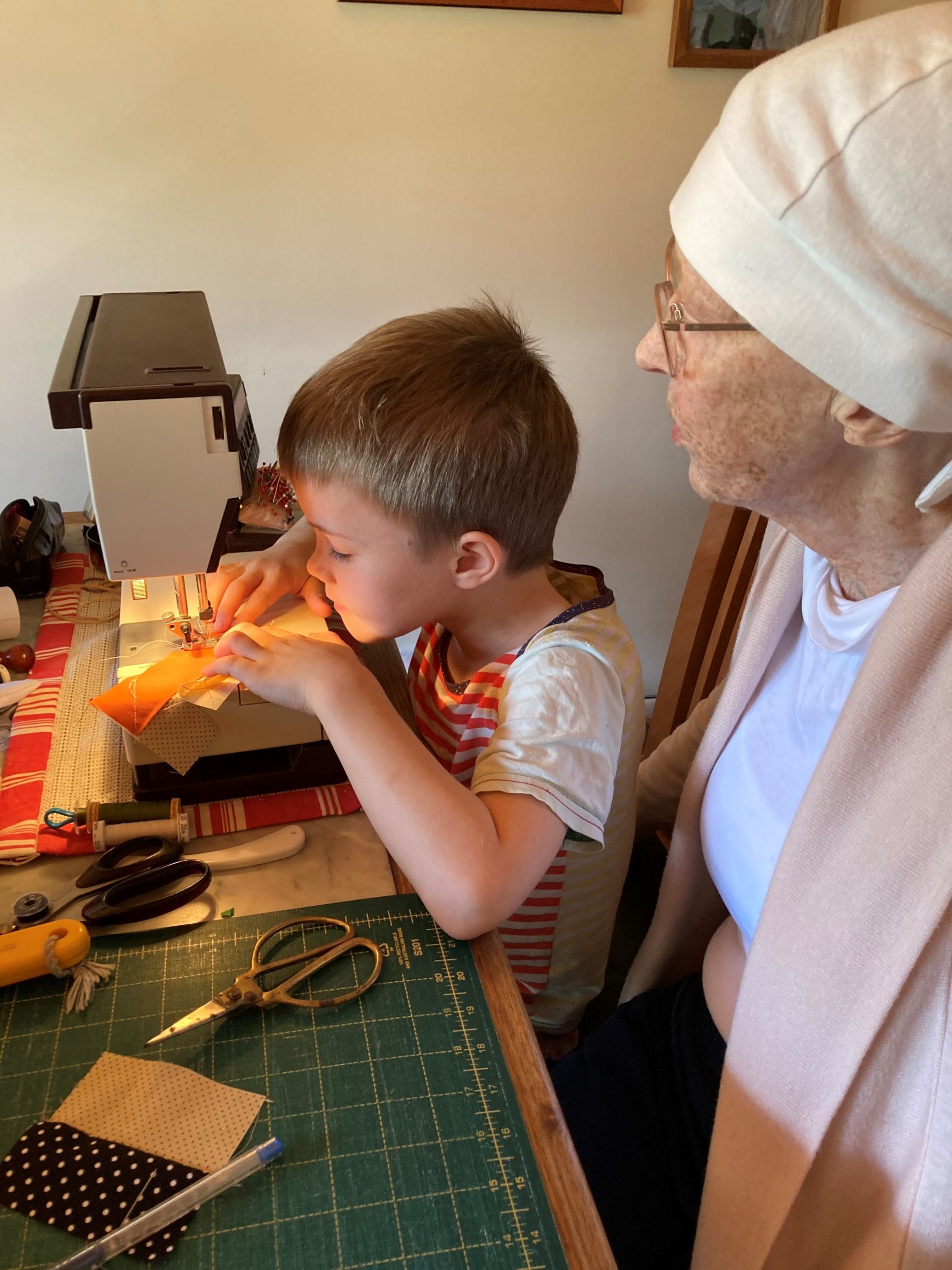
The protocol to access daratumumab
“Then they had to start me on something else. Pomalidomide was next on the list, so I had that for a month. Even though they felt it wouldn’t do anything, you have to go through it to get the next, daratumumab.
“That’s the only time I felt anger, when the carfilzomib stopped working. It made me angry that I had to wait before I could go on the daratumumab,” said Shirley.
Scans showed spots on Shirley’s ribs and one at the top of her arm, so she had two rounds of chemotherapy to treat these, along with six cycles of daratumumab.
“I’m absolutely fine on the daratumumab,” said Shirley.
It’s a four-hour infusion every Thursday in the day ward, and she hasn’t had any of the side-effects she experienced on previous treatments – constipation, diarrhoea, tummy or bowel pain.
“On the first day my body races a bit and I get a bit tired but that’s all and of course, I’ve lost my hair again from the chemo.
“But I think I’m at the end of the line of what I can have,” said Shirley matter-of-factly about what treatment she may have next.
“I’m just going along. I feel well and I’m happy being at home with my husband.
“You know with COVID, you can’t do anything anyway, I still don’t feel I’m denied anything. This time that I have can’t be a high time because of COVID.
“I don’t walk so much anymore, well, not a long way, I haven’t got that strength, but we’ve got a light wheelchair, which I loathe, and I have been in it to go along the river.
“And we’re near the beach and it’s quite lovely and my husband likes to walk.”
Shirley loves to quilt and has sewn since her childhood. She and her sister, Heather, ran a dedicated quilt shop together for many years at Geelong, then Shirley worked at a haberdashery at Ocean Grove prior to retiring.
“I’ve got plenty here [at home] to sew. I love all my fabrics and there is so much that I want to do. I have a sewing workroom but find it very hard to go in there,” said Shirley.
After her myeloma diagnosis, Shirley couldn’t see the point, knowing the treatment “was just to keep you alive and as well as could be”.
“I did try to ignore the term, but it really has been palliative care,” she said.
“When I was diagnosed, the diagnosis was terminal. I know there’s no cure for myeloma, but I wasn’t expected to get 15 years out of it.”
After Shirley’s first relapse, she pushed for a prognosis and was told, “well, without treatment, maybe six months”.
“But it didn’t worry me, it was just a fact,” said Shirley, who is now heading towards three years down the track.
Dealing with a loss of choice in her life
“So that’s why if I went into my sewing room, it was sad,” she said, describing a sadness that was “different… not scary… not complaining… just not good”.
“I didn’t like that my choice had been taken away and it’s hard knowing that.
“At first, I thought, ‘oh, what’s the point of looking out the window? What’s the point of pulling out that weed? What’s the point of… ?
“But it’s okay. I go along with it now happily, and what will be, will be.”
“I’ve brought things out of the sewing room and have done a bit of handwork downstairs,” said Shirley.
And she’s teaching her three grandsons to sew.
“When they were little, they would sit on my knee while I sewed.
“I’ve got my eight-year-old [Finn] and six-year-old [Darcy] on the sewing machine. It’s just delightful, and they are so precise,” said Shirley about her daughter’s children.
“I put a box under the foot press for Darcy, so he can reach. His chin’s just above the machine.
“I show them where to sew and where to line it up, and they love it because they’ve got strips of fabric that become something.”
Their younger brother, Reuben, aged three, watches on.
They call her Grandma and sometimes, when Shirley is well enough, all three stay the night.
“It’s lovely. I follow them to their bedrooms and kiss them goodnight and the oldest one loves to cook. When he comes to stay, he cooks my egg and asks, “how would you like your egg this morning Grandma?”.
What will be, will be
“My thing has always been, what will be will be, so let go of the fear because someone is looking after you.
“The doctors are wonderful, the treatment you’re getting is great, and it changes if you change. You only have to let them know if you’ve got a side-effect and they can make an adjustment.
“I feel for my husband in the future, but he’s really strong and is busy doing things.
“We don’t worry about the ‘when’ or the ‘what after’.”
“We have a property down at Wye River. He was a builder and he’s nicely preoccupied with plans for that. If we do sell it, it needs to be renovated and extended, so that’s what he’s doing.”
“And he’s learning to cook different dishes.”
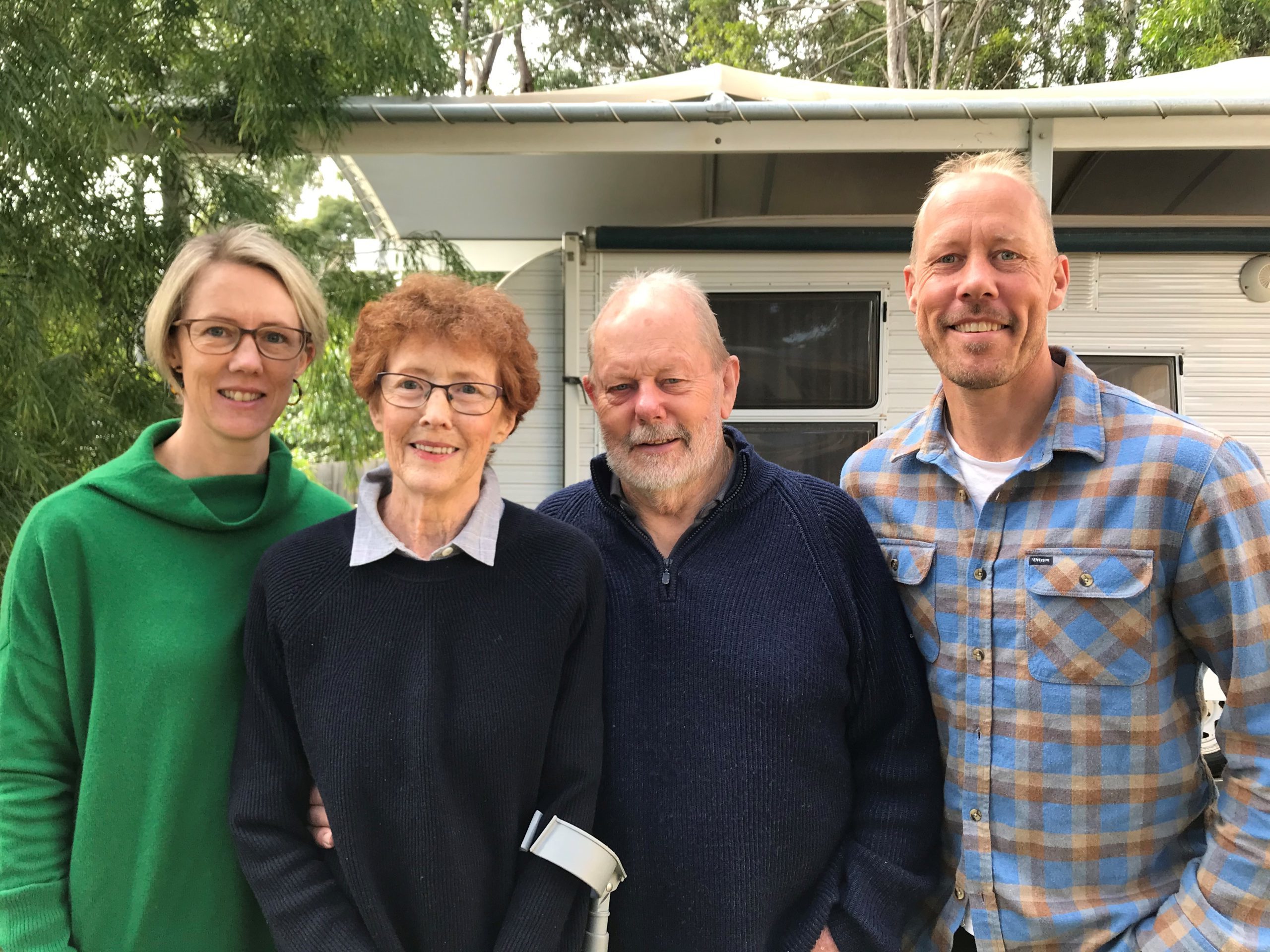
Support from the Leukaemia Foundation**
When first diagnosed, Shirley met one of the Leukaemia Foundation’s blood cancer support coordinators, Linda Saunders, whom she saw a few times and more recently, during lockdown, they have spoken on the phone.
“She was very good. I was very down at one stage and didn’t realise it when she happened to come by in the day ward,” said Shirley.
“I said I was really quite flat, and she said, ‘that won’t do, you don’t have to be’. I went to a psychologist who changed the antidepressant I was on.”
Shirley also had joined the myeloma support group for coffee and a talk – “they’d have a speaker sometimes” – and a Christmas lunch.
“Honestly that was really lovely, and I was surprised how nice it was to meet other people with myeloma, because I was thinking, I don’t need that.”
“I remember, one of the ladies said to me after my transplant, ‘oh, I was really worried about you, and you look so good’. That was just nice and that’s somebody you don’t know.”
*Bruce Irwin is a 10-year survivor of an aggressive form of non-Hodgkin lymphoma.
Last updated on June 23rd, 2021
Developed by the Leukaemia Foundation in consultation with people living with a blood cancer, Leukaemia Foundation support staff, haematology nursing staff and/or Australian clinical haematologists. This content is provided for information purposes only and we urge you to always seek advice from a registered health care professional for diagnosis, treatment and answers to your medical questions, including the suitability of a particular therapy, service, product or treatment in your circumstances. The Leukaemia Foundation shall not bear any liability for any person relying on the materials contained on this website.